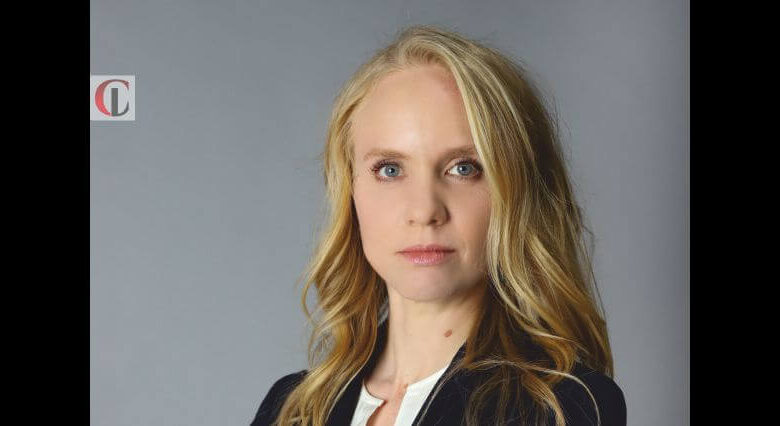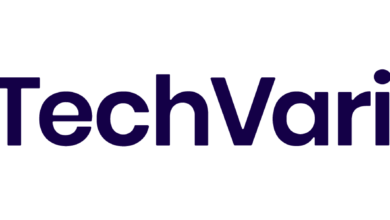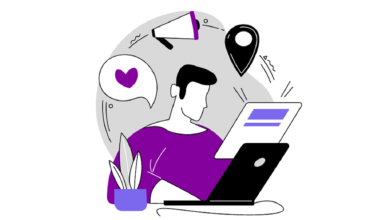Cosima Piepenbrock: Driving Innovation at the Nexus of Technology and Human Experience

The digital transformation landscape reveals a fascinating interplay between human behavior and technological advancements. How people adapt, resist, or embrace change shapes the success of any digital initiative. For Cosima Piepenbrock, this juncture became the focal point of her academic pursuits and professional journey.
Embarking on a path fueled by curiosity and academic rigor, Cosima studied psychology, especially as it applies to ergonomic display design for her Ph.D. Her scholarly endeavors were not merely confined to theoretical realms but driven by a mission to search and explore the intricacies of human-system interaction. It is a journey marked by a deep-seated interest in optimizing organizational structures and product designs to enhance human performance and well-being.
Transitioning from academia to the dynamic world of consultancy at Accenture Strategy, Cosima found herself at the forefront of digital transformation projects. Here, she developed a strategic approach to digital innovation.
Driven by a commitment to leveraging technology for positive change, Cosima then made the move to the World Economic Forum. Within this well-respected organization, dedicated to improving the state of the world, she assumed a dual mantle as the Head of Product for the Forum’s AI Product Suite and the Head of Experience. In this role, Cosima manages technological innovations, harnessing the latest developments in AI to create meaningful digital experiences. Her vision is to develop transformative products, leveraging frontier technologies to foster best in class, agile and future-ready user-experiences. .
What initially drew you to the field of product management and user experience?
What initially drew me to the field of product management and user experience was a strong interest in the intersection of human behavior and technology. The idea of developing digital products that leverage the latest advancements in technology to create value and meaningful experiences for users in different contexts and with diverse needs is something that got me excited from the start.
Moreover, I wanted to work in a field that relies on proactive and continuous learning. Staying ahead of technological developments and industry trends as well as engaging with thought leadership are aspects of my job that I enjoy tremendously.
Another aspect that attracted me to these fields is cross-functional collaboration. I find it very rewarding to work with engineers, designers, marketers, and other stakeholders to exchange ideas and bring up diverse perspectives. I thrive in collaborative settings in which I can contribute to a team effort aimed at creating exceptional products are environments.
How do you approach the intersection of product development and user experience to create meaningful and impactful solutions?
In my role as Head of Product, I lead the World Economic Forum’s AI product portfolio, focusing on harnessing cutting-edge AI technology like Large Language Models (LLMs) to equip our members with informed decision-making capabilities and strategic foresight.
Additionally, my team develops augmented AI solutions to enhance staff efficiency via conversational systems and process automation. I’m also deeply involved in discussions on responsible AI leadership and governance, ensuring that our products adhere to ethical, security and privacy standards while delivering impactful outcomes.
As Head of User Experience, I define design and UX standards with a team of design strategists to create cohesive experiences across the overall digital product landscape of the World Economic Forum. My focus here is on providing frameworks, processes and systems that drive product coherence at scale and foster cross-team collaboration.
Working at the intersection of Artificial Intelligence and User Experience while engaging with experts from both domains offers an exhilarating opportunity to shape the future of technology in a way that is both inclusive and impactful. It’s an exciting time that allows product teams to experiment with new technological developments, be courageous and push for solutions that hadn’t been possible before.
Through my experience, I’ve found that these agile, innovation-driven product initiatives are most successful when rooted in a strong foundation of user-centricity and integrated within a responsible AI governance framework.
How do you prioritize and manage the various aspects of your role as Head of Product and User Experience?
In my dual role, I prioritize by aligning tasks with our overarching strategic vision, ensuring both agility for ad hoc requests and a steadfast focus on long-term goals. This balance is maintained by a clear vision and regular reassessment of priorities to stay aligned with our strategic objectives. My approach involves engaging with a diverse range of stakeholders to inform and refine our strategies.
Moreover, I lead strong teams by delegating effectively to trusted leaders which allows me to focus on strategic initiatives while ensuring smooth day-to-day operations. This strategy is supported by continuous learning and adaptation within the team allowing us to tackle complex challenges and develop innovative solutions. By measuring the impact of our initiatives and leveraging technology to enhance efficiency, we ensure that our efforts contribute meaningfully to the delivery of our strategy.
What do you find most rewarding about working in tech and shaping the future of technology?
Working in technology offers the unique opportunity to drive impactful and responsible innovation, shaping the future of technology in a way that positively impacts society. What I find most rewarding is the collaboration with talented, committed and diverse teams. Together, we tackle complex challenges and develop solutions that push the boundaries of what’s possible, embodying a multi-stakeholder approach that is crucial for inclusive progress.
Being part of this dynamic environment means constantly learning and growing while also contributing to advancements that have the potential to improve lives on a global scale. It’s incredibly fulfilling to be at the forefront of innovation, driving positive change and building a brighter future for generations to come.
As someone with diverse experience across industries, how do you leverage your interdisciplinary background in your current role?
Leveraging my interdisciplinary background in my current role allows me to apply different lenses to a challenge or situation where each lens provides a unique framework for analysis and decision-making. This approach helps me gain a comprehensive understanding of the issue and explore different avenues for addressing it effectively.
Understanding the language and priorities of diverse stakeholders also helps me facilitate collaboration and communication between different teams. Lastly, my experience has taught me the importance of adaptability and the power of interdisciplinary collaboration in finding comprehensive solutions to complex problems.
What leadership principles or values guide you in your role as a leader in tech?
I’m guided by the principles of visionary leadership, empowerment and inclusion. I believe in developing a compelling vision for my teams by inspiring them to pursue ambitious goals and innovate fearlessly. Empowerment is also central to my leadership approach. I trust and encourage team members to take calculated risks, experiment with new ideas and embrace failure as part of the learning process.
Above all, I am committed to creating inclusive environments where diverse perspectives are not only welcomed but actively valued and heard. Central to this are respectful communication and collaboration as well as an awareness that the most significant voices in a discussion aren’t always the loudest. By fostering a culture of trust, I strive to empower all team members to contribute their best.
How do you foster innovation and creativity within your team and organization?
In a time marked by constant change, innovation is key. I actively foster a growth mindset within my teams, encouraging members to embrace curiosity and view setbacks or obstacles as opportunities for growth and exploration. I provide support in navigating the uncertainties inherent in innovation processes, employing robust risk management strategies and frameworks for tracking the success of new ideas. This ensures that we can swiftly conclude projects that don’t prove to be successful, thereby reallocating resources effectively.
Moreover, maintaining discipline is essential for successfully fostering innovation within teams. It helps the team remain focused amidst potential distractions, manage time effectively and maintain resilience in the face of challenges. This way, we sustain momentum towards our goals.
Can you share some insights into your approach to collaborating with cross-functional teams to achieve product success?
In my approach to collaborating with cross-functional teams, establishing common goals and rallying behind a joint vision is paramount. I ensure that all team members are aligned on the overarching objectives of the product and understand how their efforts contribute to its success.
Clear and open communication is key, so I foster an environment where team members feel comfortable sharing challenges and seeking solutions collaboratively. When staffing product teams, I pay special attention to finding talents with ‘cross-functional translation skills.’
This means product managers, designers, engineers, testers, data scientists, business or support colleagues who excel at communication beyond their area of expertise and help build bridges between the different functions within the team.
What advice would you give to aspiring women leaders looking to make an impact in the tech industry?
Find projects you are passionate about and a team you enjoy working with. Build a network and nurture it. Believe in your skills, speak up and make your voice heard.



